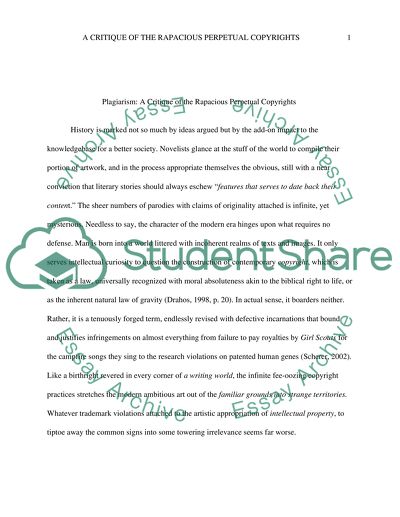Cite this document
(“Plagiarism:a critique of the rapacious perpetual copyrights Essay”, n.d.)
Plagiarism:a critique of the rapacious perpetual copyrights Essay. Retrieved from https://studentshare.org/philosophy/1470422-plagiarisma-critique-of-the-rapacious-perpetual-copyrights
Plagiarism:a critique of the rapacious perpetual copyrights Essay. Retrieved from https://studentshare.org/philosophy/1470422-plagiarisma-critique-of-the-rapacious-perpetual-copyrights
(Plagiarism:A Critique of the Rapacious Perpetual Copyrights Essay)
Plagiarism:A Critique of the Rapacious Perpetual Copyrights Essay. https://studentshare.org/philosophy/1470422-plagiarisma-critique-of-the-rapacious-perpetual-copyrights.
Plagiarism:A Critique of the Rapacious Perpetual Copyrights Essay. https://studentshare.org/philosophy/1470422-plagiarisma-critique-of-the-rapacious-perpetual-copyrights.
“Plagiarism:A Critique of the Rapacious Perpetual Copyrights Essay”, n.d. https://studentshare.org/philosophy/1470422-plagiarisma-critique-of-the-rapacious-perpetual-copyrights.


